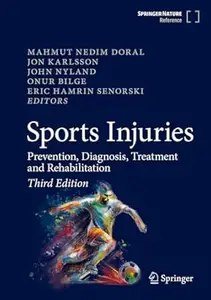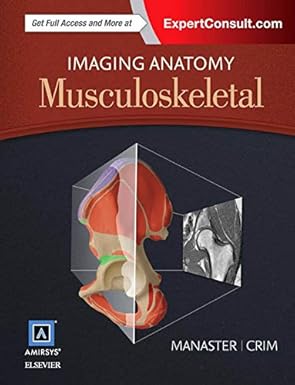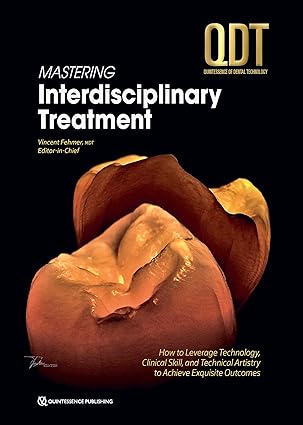Chapter 2 Country Demographics 2.1 Country Profiles A total of eight African countries are selected as samples in this book: Algeria, Côte d’Ivoire, Ghana, Kenya, Morocco, Nigeria, South Africa, and Tunisia. Three of the countries are from North Africa, three are from West Africa, one from East Africa, and one from South Africa. The diversity in the location, culture, and economic development of the countries should provide a comprehensive profile of the African continent. North Africa has a stronger public healthcare system compared to other parts of Africa. This chapter presents the country profiles of these countries, which includes the basic demographics (life expectancy, median age, fertility rate, popu- lation distribution), economic status (GDP and GNI), gender ratio, and education system. 2.1.1 Algeria The People’s Democratic Republic of Algeria in northern Africa has a population of 43,900,000 (World Bank, 2020) with an average life expectancy of 76.95 years (World Bank, 2020). The median age is 28.1 years (27.8 for men and 28.4 for women). The fertility rate is 2.946 (World Bank, 2020), resulting in annual population growth of 1.85% (World Bank, 2020), as shown in Fig. 2.1. Algeria’s gross national income (GNI) per capita is $3,948.3 (World Bank 2019). Spoken languages include Arabic (official), French (lingua franca), Berber or Tamazight (official), and dialects of Kabyle Berber (Taqbaylit), Shawiya Berber (Tacawit), Mzab Berber, and Tuareg Berber (Tamahaq). The main religion is Islam (99%), with Christianity and Judaism accounting for <1% (2012 est.). The northern capital, Algiers, is the most populous city (1,977,663), followed by Boumerdas (786,499), Oran (645,984), and Tebessa (634,332) (Population Data, 2021). Most © The Author(s) 2023 I. Niohuru, Healthcare and Disease Burden in Africa, SpringerBriefs in Economics, https://doi.org/10.1007/978-3-031-19719-2_2 7 8 2 Country Demographics Fig. 2.1 Projected population growth in Algeria, 1960–2080 (Data source United Nations—World Population Prospects. Map source Macrotrends) Algerians live in the northern part of the country, as the southern part is mainly a desert. The gender ratio in Algeria fluctuates. The 2020 average was 102.10 men to 100 women, but at younger ages, there are more males than females. By age 45, the number of females surpasses that of men (Fig. 2.2). Education in Algeria is free, starts at age six, and continues for nine consecutive years. Although mandatory, many children do not attend school, especially girls. Among girls who do attend, however, many complete secondary school and univer- sity. The government of Algeria funds a public healthcare system that is accessible and free to all Algerian citizens. This healthcare system generally favors preventative healthcare and clinics over hospitals.
چکیده فارسی
فصل 2 جمعیت شناسی کشور 2.1 مشخصات کشور در مجموع هشت کشور آفریقایی به عنوان نمونه در این کتاب انتخاب شده اند: الجزایر، ساحل عاج، غنا، کنیا، مراکش، نیجریه، آفریقای جنوبی و تونس. سه کشور از شمال آفریقا، سه کشور از غرب آفریقا، یک کشور از شرق آفریقا و یک کشور از آفریقای جنوبی هستند. تنوع در مکان، فرهنگ و توسعه اقتصادی کشورها باید نمایه جامعی از قاره آفریقا ارائه دهد. شمال آفریقا سیستم مراقبت های بهداشتی عمومی قوی تری نسبت به سایر مناطق آفریقا دارد. این فصل مشخصات کشوری این کشورها را ارائه میکند که شامل جمعیتشناسی اولیه (امید به زندگی، میانگین سن، نرخ باروری، توزیع جمعیت)، وضعیت اقتصادی (GDP و GNI)، نسبت جنسیتی، و سیستم آموزشی است. 2.1.1 الجزایر جمهوری دموکراتیک خلق الجزایر در شمال آفریقا دارای 43900000 نفر جمعیت است (بانک جهانی، 2020) با میانگین امید به زندگی 76.95 سال (بانک جهانی، 2020). میانگین سنی 28.1 سال (27.8 برای مردان و 28.4 برای زنان) است. نرخ باروری 2.946 است (بانک جهانی، 2020)، که منجر به رشد سالانه جمعیت 1.85٪ (بانک جهانی، 2020)، همانطور که در شکل 2.1 نشان داده شده است. درآمد ناخالص ملی الجزایر (GNI) سرانه 3948.3 دلار است (بانک جهانی 2019). زبانهای گفتاری شامل عربی (رسمی)، فرانسوی (lingua franca)، بربری یا تمازیت (رسمی) و گویشهای کابیلی بربر (تاقبیلیت)، شویه بربر (تکاویت)، مزاب بربر و طوارق بربر (تمهاق) است. دین اصلی اسلام (99٪) است و مسیحیت و یهودیت کمتر از 1٪ را تشکیل می دهند (2012 est.). پایتخت شمالی، الجزیره، پرجمعیت ترین شهر (1،977،663)، پس از آن بومرداس (786،499)، اوران (645،984)، و تبسا (634،332) (اطلاعات جمعیت، 2021) هستند. بیشتر © The نویسنده(های) 2023 I. Niohuru, Health and Disease Burden in Africa, SpringerBriefs in Economics, https://doi.org/10.1007/978-3-031-19719-2_2 7 8 2 جمعیت شناسی کشور شکل 2.1 رشد جمعیت پیشبینیشده در الجزایر، 1960-2080 (منبع دادهها سازمان ملل متحد - چشمانداز جمعیت جهان. منبع نقشه ماکروروندها) الجزایریها در بخش شمالی کشور زندگی میکنند، زیرا بخش جنوبی عمدتاً یک بیابان است. نسبت جنسیتی در الجزایر در نوسان است. میانگین سال 2020، 102.10 مرد به 100 زن بود، اما در سنین پایین تر، تعداد مردان بیشتر از زنان است. در سن 45 سالگی، تعداد زنان از مردان بیشتر می شود (شکل 2.2). تحصیل در الجزایر رایگان است، از شش سالگی شروع می شود و برای 9 سال متوالی ادامه می یابد. اگرچه اجباری است، اما بسیاری از کودکان به مدرسه نمی روند، به ویژه دختران. با این حال، در میان دخترانی که تحصیل میکنند، بسیاری از دبیرستان و دانشگاه را به پایان میرسانند. دولت الجزایر یک سیستم مراقبت های بهداشتی عمومی را تامین می کند که برای همه شهروندان الجزایری در دسترس و رایگان است. این سیستم مراقبت های بهداشتی عموماً از مراقبت های بهداشتی و کلینیک های پیشگیرانه نسبت به بیمارستان ها حمایت می کند.
ادامه ...
بستن ...
Ilha Niohuru
Foundation Medicine Inc.
Cambridge, MA, USA
ISSN 2191-5504 ISSN 2191-5512 (electronic)
SpringerBriefs in Economics
ISBN 978-3-031-19718-5 ISBN 978-3-031-19719-2 (eBook)
https://doi.org/10.1007/978-3-031-19719-2
© The Author(s) 2023. This book is an open access publication.
Open Access This book is licensed under the terms of the Creative Commons Attribution 4.0 International
License (http://creativecommons.org/licenses/by/4.0/), which permits use, sharing, adaptation, distribu-
tion and reproduction in any medium or format, as long as you give appropriate credit to the original
author(s) and the source, provide a link to the Creative Commons license and indicate if changes were
made.
The images or other third party material in this book are included in the book’s Creative Commons license,
unless indicated otherwise in a credit line to the material. If material is not included in the book’s Creative
Commons license and your intended use is not permitted by statutory regulation or exceeds the permitted
use, you will need to obtain permission directly from the copyright holder.
The use of general descriptive names, registered names, trademarks, service marks, etc. in this publication
does not imply, even in the absence of a specific statement, that such names are exempt from the relevant
protective laws and regulations and therefore free for general use.
The publisher, the authors, and the editors are safe to assume that the advice and information in this book
are believed to be true and accurate at the date of publication. Neither the publisher nor the authors or
the editors give a warranty, expressed or implied, with respect to the material contained herein or for any
errors or omissions that may have been made. The publisher remains neutral with regard to jurisdictional
claims in published maps and institutional affiliations.
This Springer imprint is published by the registered company Springer Nature Switzerland AG
The registered company address is: Gewerbestrasse 11, 6330 Cham, Switzerland
ادامه ...
بستن ...










